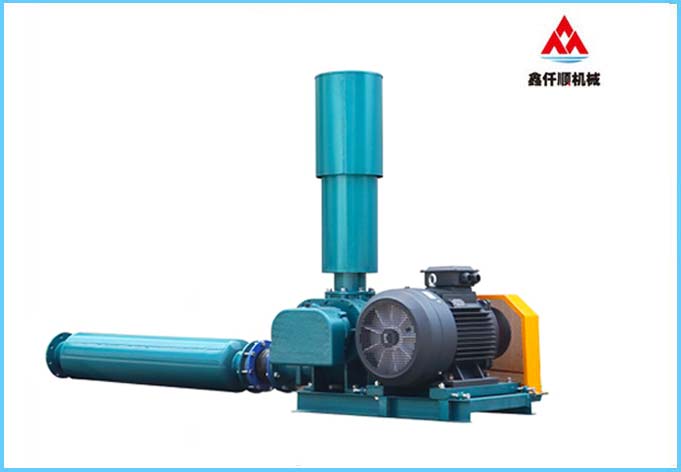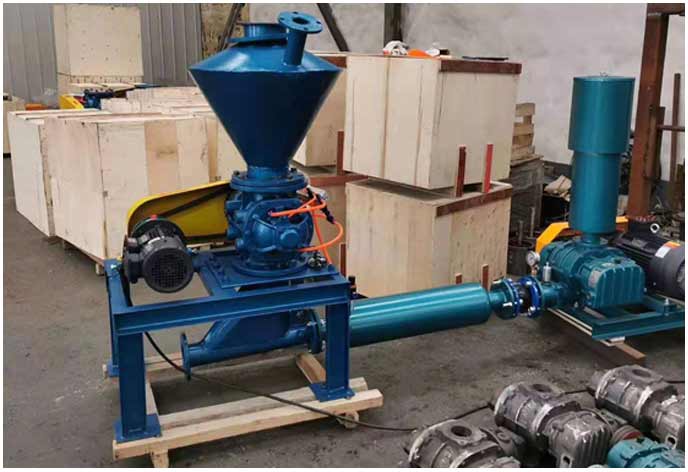The impeller in Roots blower is a very important working part. Normally, impeller damage is relatively rare. Generally, other factors lead to impeller failure or reduced working efficiency. If there are many dust particles or oil stains in the use environment, the impeller is prone to failure after long-term use.
A common three blade roots blower is mainly composed of two parts: the driver and the head. The driver is the power source of the fan, which can be either a motor or a diesel engine. The head is the main working component of the roots blower, which can achieve the purpose of gas transmission through regular operation.
To understand the working principle of Roots blower, you must have a full understanding of the head structure of Roots blower. The main components of the head are: wallboard, casing, driving impeller, driven impeller, driving driven gear, main and auxiliary oil tanks, bearings, etc. In order to have a clear understanding of the structure of Roots blower.
1、 Friction between impellers
(1) The impeller is contaminated with impurities, resulting in too small clearance;
(2) Gear wear causes large backlash;
(3) The gear is not firmly fixed. The impeller cannot be kept synchronized;
(4) The bearing wear causes the clearance to increase.
Solution:
(1) Remove the dirt and check whether the internals are damaged;
(2) Adjust the gear clearance. If the gear backlash is greater than 30%~50% of the average value, replace the gear;
(3) Reassemble the gear and keep the taper fit contact area up to 75%;
(4) Replace the bearing;
2、 Impeller and wallboard, impeller top and casing problems
(1) The installation clearance of roots blower is incorrect;
(2) The operating pressure is too high, exceeding the specified value;
(3) The operating temperature is too high; (4) The casing or base is deformed, and the fan positioning is invalid;
(4) The axial positioning of the bearing is poor.
Solution:
(1) Readjust the clearance;
(2) Find out the cause of overload and reduce the pressure to the specified value;
(3) Check the installation accuracy and reduce the pipeline tension;
(4) Check and repair the bearing and ensure the clearance.
3、 Stop immediately due to abnormal vibration and noise
Question:
(1) The clearance of rolling bearing exceeds the specified value or the bearing seat is worn;
(2) The gear backlash is too large, misaligned, and not tightly fixed;
(3) Impellers collide with impellers and impellers collide with casings due to foreign objects and dust;
(4) Impeller collision due to overload and shaft deformation;
(5) Friction between impeller and casing inlet due to overheating;
(6) The impeller loses balance due to scale or foreign matters;
(7) Anchor bolts and other fasteners are loose.
Solution:
(1) Replace the bearing or bearing seat;
(2) Reassemble the gear and ensure the backlash;
(3) Clean the fan and check whether the casing is damaged;
(4) Check the back pressure, check whether the impeller is aligned, and adjust the clearance;
(5) Check the filter and back pressure, and increase the clearance between the impeller and the casing inlet;
(6) Clean the impeller and casing to ensure the working clearance of the impeller;
(7) Tighten the foundation bolts and level the base.
I believe that after reading the above, you should also know how to solve the problem of Roots blower impeller failure. I hope it will help you.
Text term label: Roots blower
Link to this article: //wuhanzhcs.com/html/news/n02/754.htm









